During our recent trip with the Ugandan Water Project, we visited communities, schools, and health clinics for a close-up and hands-on learning experience of how clean water solutions in Uganda are helping people break free from the bondage of water-borne disease and poverty.
By building water infrastructure, developing sustainable water enterprises, and advocating for national systems that keep clean water flowing, these solutions are helping Ugandans have safe water today, tomorrow, and forever.
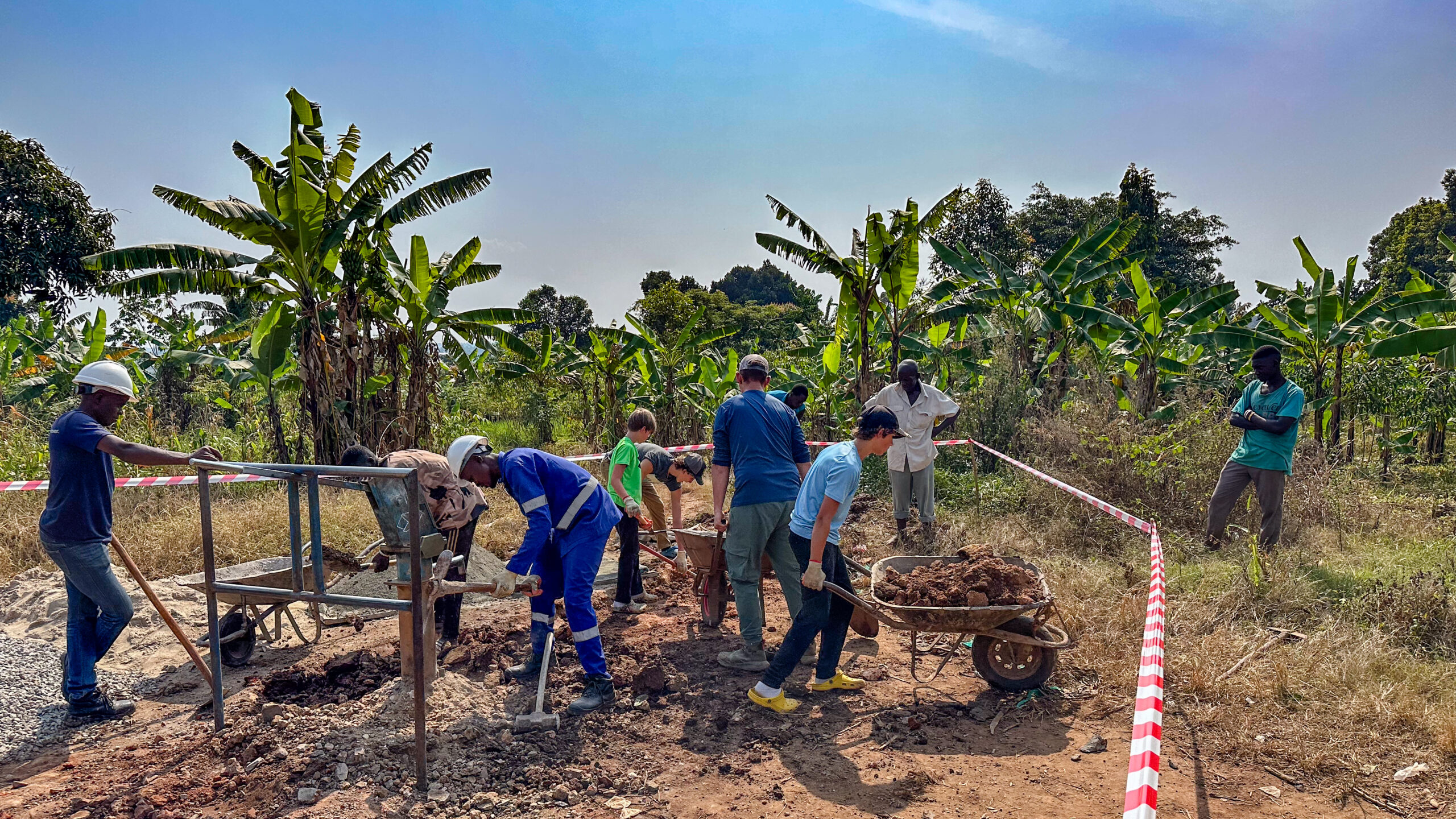
Vreeman bros lending a hand with replacing the concrete apron in borehole rehabilitation
Because open data unlocks the potential for information systems and applications to help people improve their decision-making and service delivery. Because open data enables new digital freedoms.
Open data enables new digital freedoms
Information is power
Growing a common platform for water systems and their assetsThe Ugandan Water Project has embraced a data-driven approach to understanding the water crisis, identifying where to optimally deploy its limited resources, and monitoring the progress being made.
Facilitating this approach is a (mostly) open source platform called mWater.
The mWater platform is used by NGOs, governments, and others to design, collect, and manage surveys, analyze and visualize the data, and collaborate with others.
The Ugandan Water Project has embedded mWater across its organizational workflows, from community needs assessments, to monitoring and evaluation, and communicating with donors about project progress.
For example, field workers conduct pre-site assessments with a mobile app.
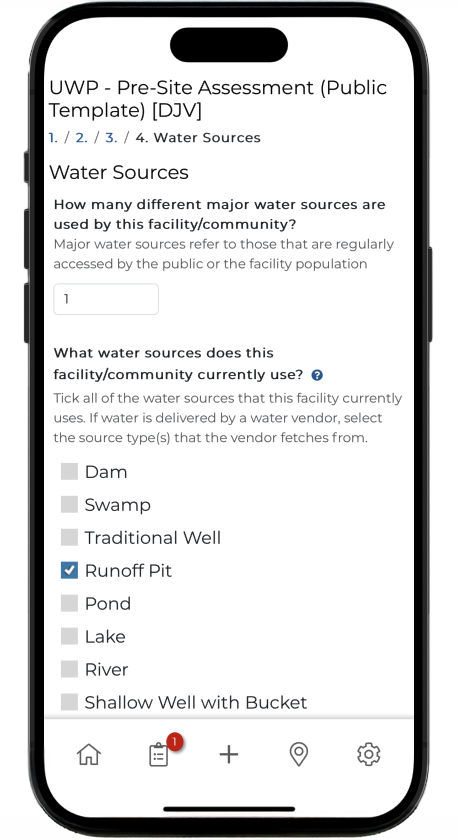
Pre-site assessments collected by field workers with a mobile app
The assessment data from each site is sent to the platform where program staff use it to identify and plan their service delivery.

Site selection dashboard view
This in depth case study describes how UWP uses the data in the mWater platform to guide site selection for programmatic interventions. The same data platform is leveraged for post-implementation tracking and reporting progress to donors.
For example, as donors, we were provided reports for Rainwater Collection System installs at Building Tomorrow Mwiguru and Building Tomorrow Kibimba.
Scaling to national deployment
Increasing value with increasing participationUganda’s Ministry of Water and Environment (MWE) was inspired by the success of partners like UWP using the mWater platform for program management, and has now launched an ambitious effort called Rural and Urban Water Management Information System (RUMIS).
The vision of RUMIS is to provide a comprehensive, data-driven platform for managing water, sanitation, and hygiene (WASH) infrastructure.
RUMIS integrates real-time data collection via offline-enabled mobile apps and advanced analytics to streamline water service monitoring. Rollout began across three pilot districts (Luwero, Lira, and Pader) with the aim of national deployment. The system replaces manual processes and fragmented databases with a unified tool that simplifies data entry and analysis, empowering local, district, and national stakeholders with synchronized, accurate information.
CEO James Harrington on why UWP is excited to partner with the Ugandan government in building data capacity
The revamped Ugandan Water Atlas created through RUMIS enhances water asset management and planning, laying the foundation for ongoing updates and collaboration among government and NGO partners like UWP.
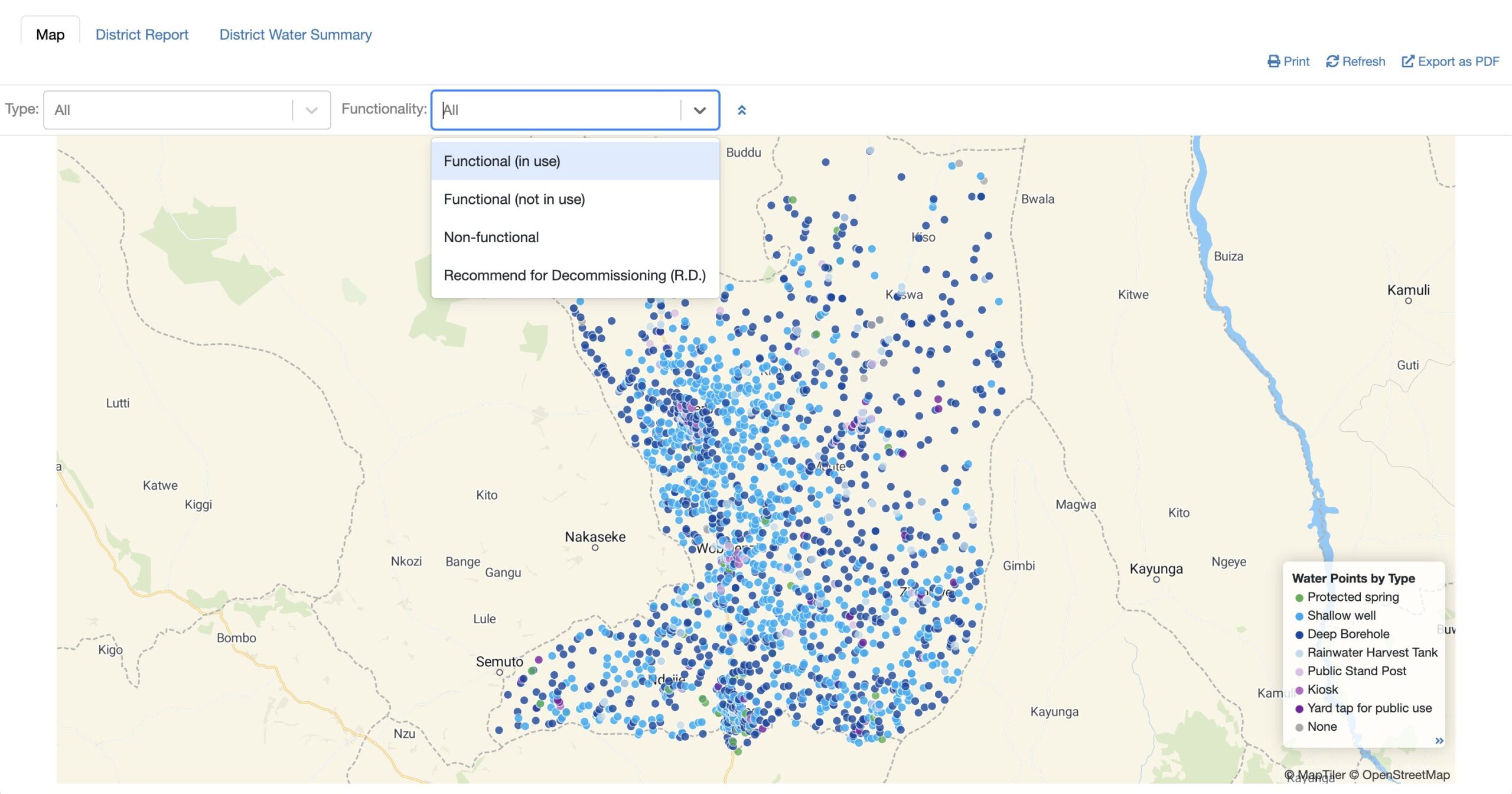
Luwero district water source dashboard in RUMIS
Technology and policy working together
RUMIS is emerging as a key technology enabler of Uganda’s transformative policy objectives. The National Framework for Operation and Maintenance of Rural Water Infrastructure in Uganda (published in July 2020) provides comprehensive guidance to ensure the sustainability and functionality of rural water facilities that serve 82% of Uganda’s population.
Developed by the Uganda Ministry of Water and Environment, the National Framework enhances the existing Community-Based Management System by introducing a Professional Management Approach. This approach leverages Area Service Providers (ASPs) like UWP’s Aqua Trust program to handle maintenance under performance-based contracts, ensuring financial sustainability, availability of quality spare parts, and efficient water facility operation.
The National Framework emphasizes streamlined coordination among stakeholders, transparent financial management, and integration of cross-cutting issues like gender equity and environmental sustainability. It includes mechanisms for community engagement, institutional capacity building, and monitoring to address challenges such as inadequate planning, limited technical expertise, and funding constraints.
Innovators in Water Management
UWP’s AquaTrust Program in Luwero DistrictThe AquaTrust initiative by the Ugandan Water Project is a model program that fits into the National Framework. AquaTrust offers a subscription-based borehole maintenance service designed to ensure continuous access to clean water for Ugandan communities. Upon enrollment, AquaTrust installs new, high-quality hardware in the community’s borehole well to minimize future breakdowns. Subscribers make secure monthly payments via mobile money, which cover comprehensive services including quarterly maintenance, annual overhauls, and a 24-hour emergency response for any well issues—all at no additional cost beyond the subscription fee.
Launched in November 2021 in partnership with Uganda’s Luwero District, AquaTrust became the exclusive service provider for wells in five sub-counties. This program represents a sustainable, community-driven solution to maintain vital water infrastructure, reducing reliance on external aid and ensuring reliable access to safe water.
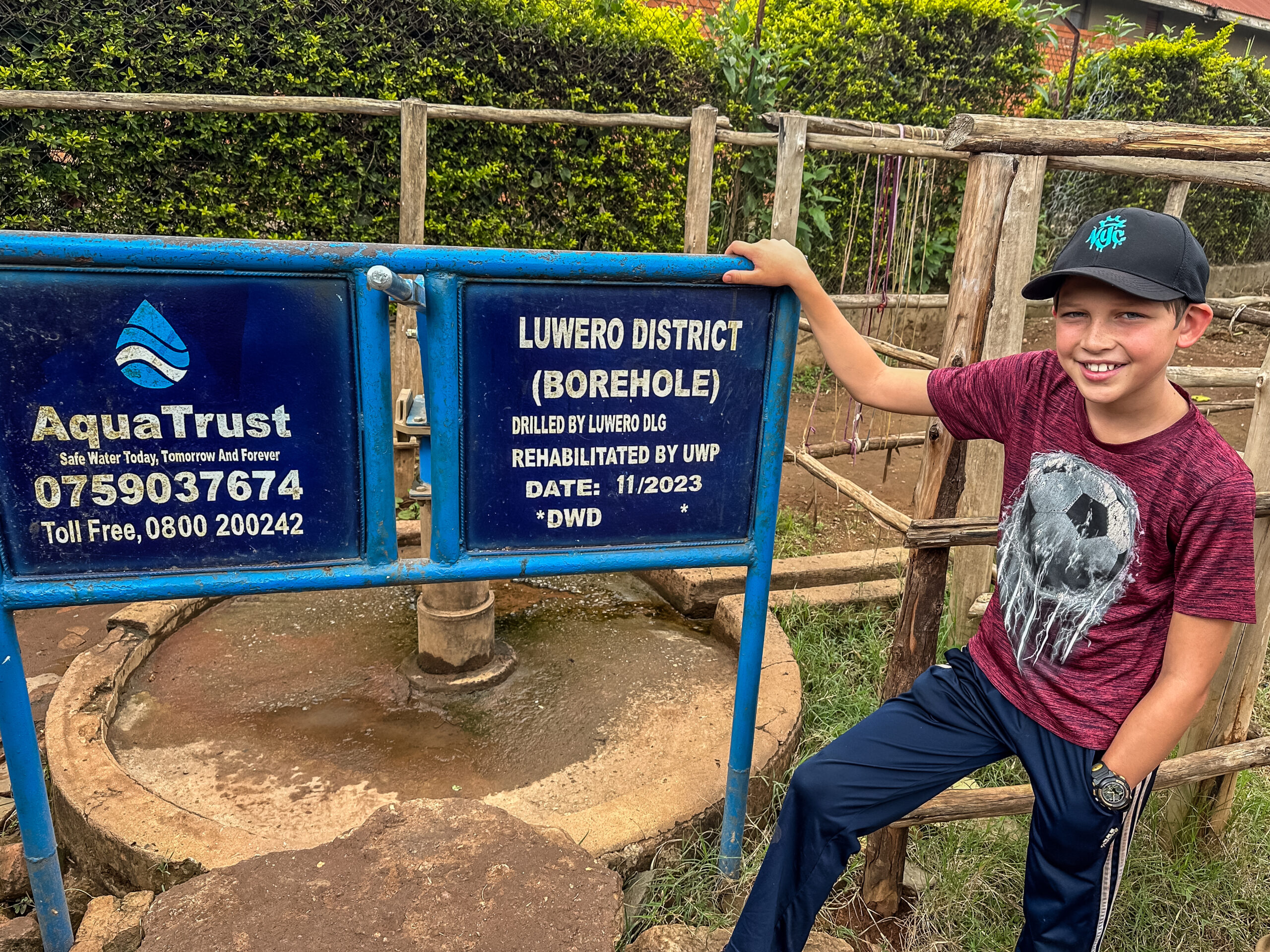
Borehole at Luwero District Headquarters managed by AquaTrust
In July 2024, we visited the Luwero District Headquarters to learn about the innovative approach to community-based water management enhanced by professional ASP services through AquaTrust.
One of the digital innovations that AquaTrust deploys are special hand pump sensors designed by charity: water. These sensors measure liters pumped per hour and can immediately identify any fluctuation in productivity. With this kind of real-time data, if a decrease in water flow is detected—or the flow stops altogether—a hand pump technician can be deployed to help make repairs.
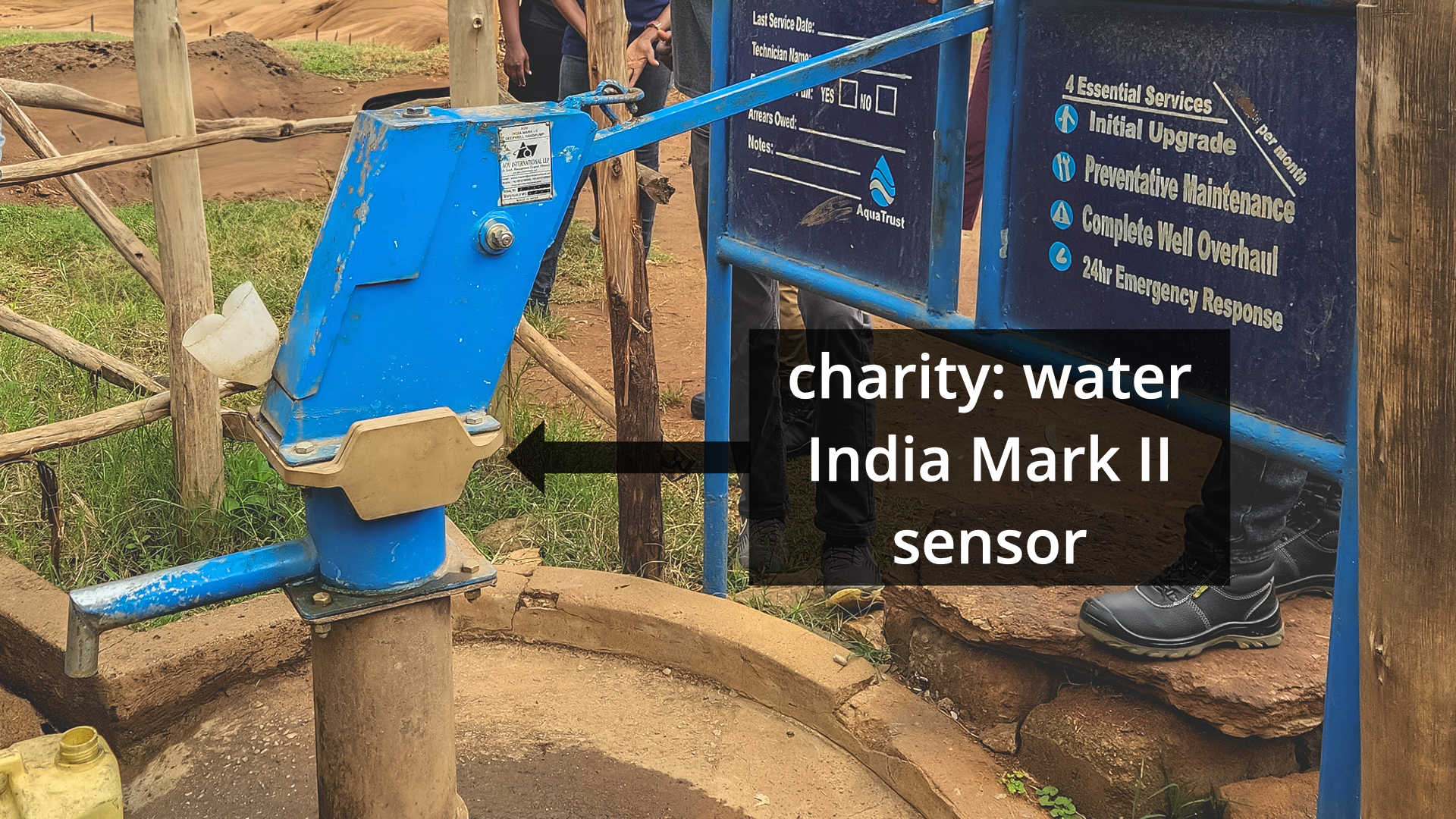
Hand pump equipped with monitoring sensor at the Luwero District Borehole
Data driven health transformations
An illustration using open source visualization componentsBy combining the detailed data collected by field staff in the mWater platform and the hourly data from the monitoring sensors, AquaTrust program officials are empowered with information about community assets, context, and up-to-date usage patterns. With this information at hand, the ASP can coordinate efficient responses to both routine maintenance and mechanical breakdowns.
The mWater and the charity: water platforms provide API access so the underlying data can be remixed, analyzed, and presented to support program operations and strategic planning.
To illustrate, I created a simple dashboard using the open source software tools of Python, Dash, and Plotly.
For each water point + sensor, we can get an at-a-glance view of basic metadata, including an interactive map and images captured from the field.
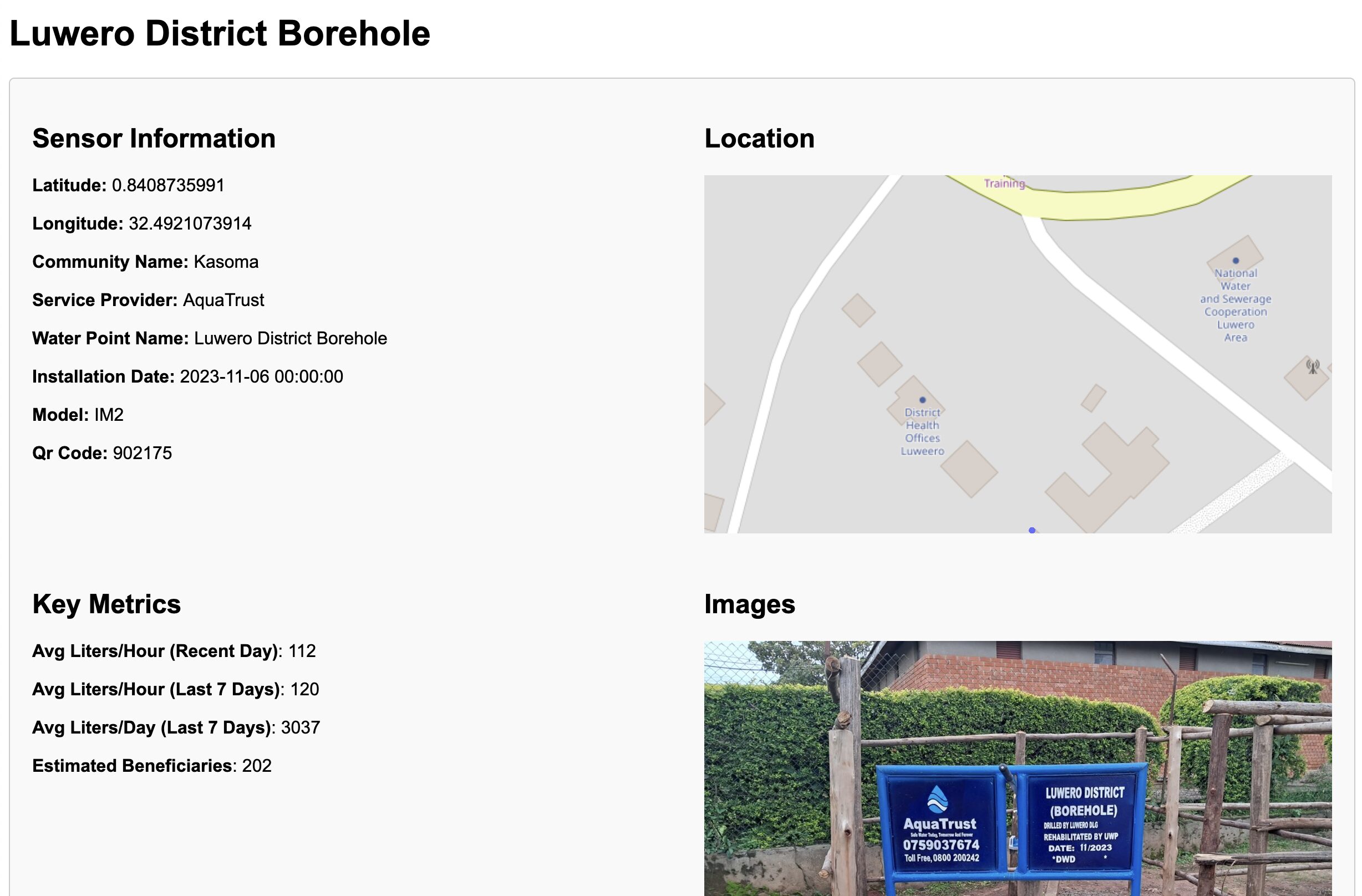
By processing the real-time sensor data we can draw attention to abnormal operations:

And then by analyzing the historic sensor data we can plot various trends over time, including:
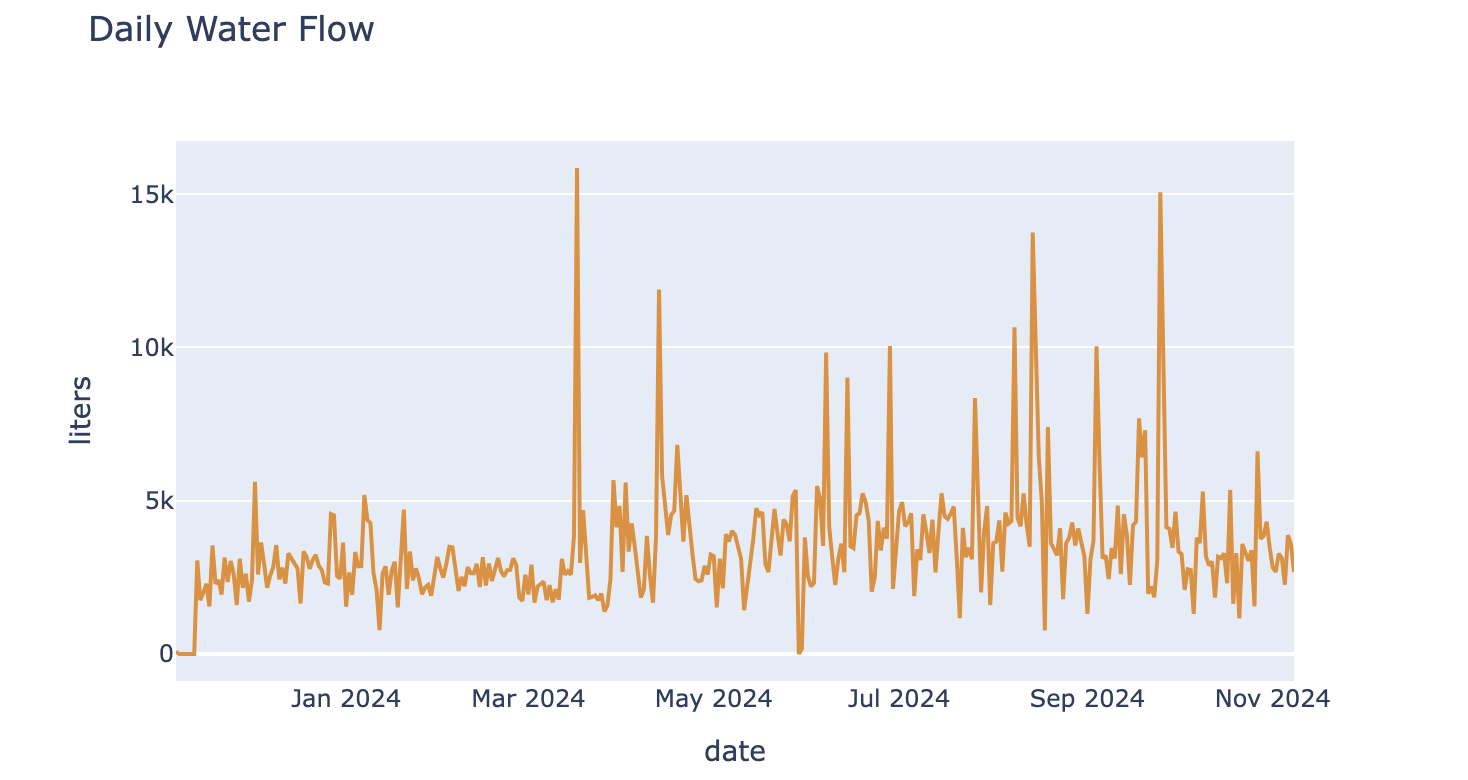


Wrap-up
It’s remarkable to see how digital transformation in Uganda is unlocking the power of clean water data and accelerating a brighter future. Open data is unlocking the potential for information systems and applications to help people improve their decision-making and service delivery.
I’m excited to see how open data will enable new digital freedoms in Uganda.
